Arthrosis is a chronic joint disease in which the joint cartilage is progressively destroyed.As the cartilage is destroyed, changes in the bone that covers the cartilage, and in the joint capsule
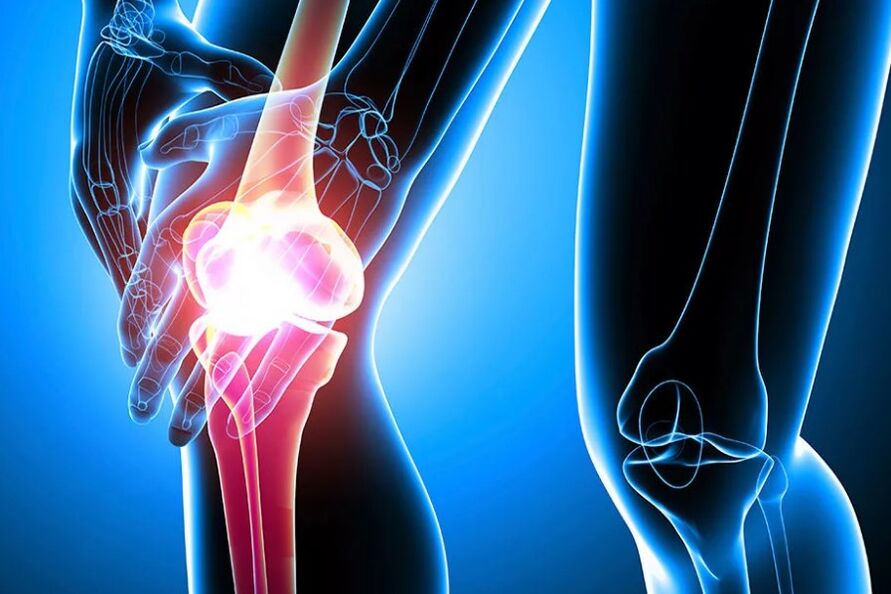
What does the word arthritis mean and what are its synonyms?However, this description is not entirely accurate, as with arthritis in the union there are some inflammatory changes.In English -speaking places, our "our" arthritis in the vast majority of cases is called arthritis, ie.Common inflammatory disease (suffixes iti), while we are usually called arthritis, damage to the joints in rheumatic disease, is rare, purulent in the joint, etc.Sometimes they try to correct this dispute with another term: arthroso -arthritis, but it is rare.
In modern scientific articles, the term osteoarthrosis is most often found (from the Greek words "osteo" - bone, "arthros" - joint, ie, non -inflammatory disease of the node and bone).And again, in English -speaking places, our ostosis arthritis is called osteoarthritis (Ostheoarthritis), ie.Inflammatory node and bone disease
Often from patients we hear the question: "At first, arthritis was diagnosed for me, and now osteoarthritis is already writing. Is it really so bad?"In fact, arthritis and arthritis are synonyms, and your doctors talked about the same.
As we have already noticed at first, with arthritis (osteoarthrosis), the cartilage is progressively destroyed, and the bones are gradually involved in the process.With arthrosis in the bone, first part of the sclerosis occurs as a result of the loss of the properties contained in the shock.Then there are notes along the ends of the bone (existent), which are often incorrectly called "
Sali deposits "- In fact, with ordinary arthritis, there are no salts.With a further course of the disease, the bone begins to bend, deform, the cysts are formed in it: often the disease is called Deformation of arthrosis (osteoarthrosis).In the old medical books, you can sometimes find the phrase "Transfiguration", but now it is almost never used.Arthrosis, which was raised for unknown reasons or spontaneously.Of course, now scientists no longer consider arthritis in a mystery and the reasons for its development are known.More about the causes of arthrosis, for the primary and secondary arthrosis is below.Hip fusion arthrosis is called coxarthrosis (from the word "coxa" - hip), ankle joint - crurosteoarthritis ("Cruuris" - lower leg), knee -
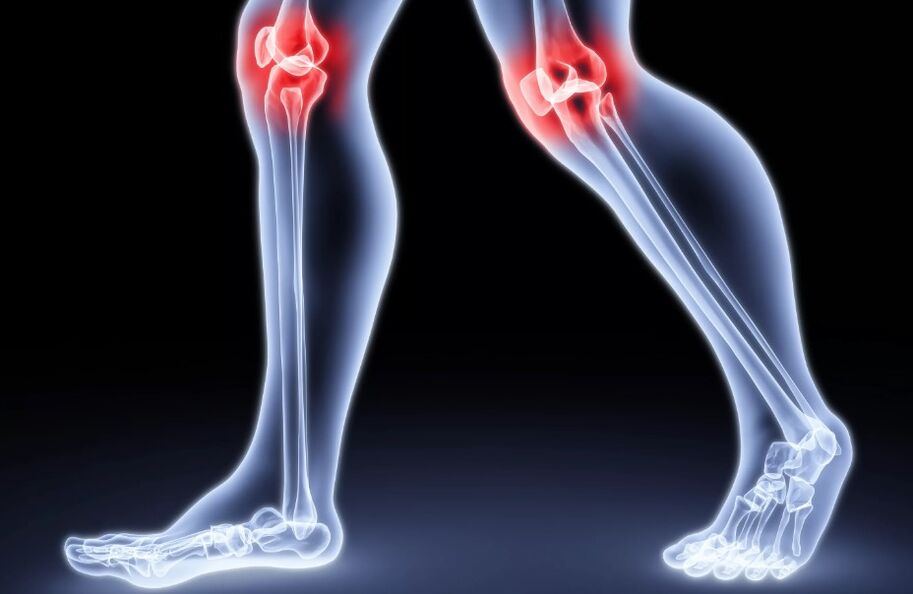
gonartrosis ("Gene" - knee).In most cases, arthritis affects both knee joints, while one of the joints can be more destroyed.In this case, the diagnosis sounds like a bilateral gonartrosis with a predominant injury to the right (or left) knee joint. Often, not one, but some joints are affected by arthrosis, so they use another term -
polyosteoartrosis which means losing three or more joints (two symmetrical, for example, such as knee, and some others).In this case, the diagnosis usually sounds as follows: Poliosteoarthritis with a predominant damage to the knee joints (or one of them). Why does the arthrosis of the knee joint occur?
Knee joint arthrosis is different.Depending on the causes of its appearance, the primary and secondary arthrosis is distinguished the primary arthrosis of the knee joint the articular cartilage is constantly destroyed and updated, and normally these processes are balanced.With age, the cartilage update slows down and the destruction of the cartilage, which is called the process of degradation or degeneration, begins to prevail
Artroza e nyjës së gjurit është e ndryshme. Në varësi të shkaqeve të shfaqjes së saj, dallohet artroza parësore dhe sekondare.
Artroza parësore e nyjës së gjurit
Kërcëri artikulare shkatërrohet dhe azhurnohet vazhdimisht, dhe normalisht këto procese janë të ekuilibruar. Me moshën, azhurnimi i kërcit ngadalësohet dhe shkatërrimi i kërcit, i cili quhet procesi i degradimit ose degjenerimit, fillon të mbizotërojë.
The process of synthesis and destruction of the cartilage is normally balanced.If degeneration begins to prevail, then knee joint arthritis will begin
In most cases, cartilage degeneration, that is, arthrosis development, occurs after 45-50 years, but sometimes arthritis can develop in 20 years.Fortunately, the development of arthritis at such a young age is extremely rare
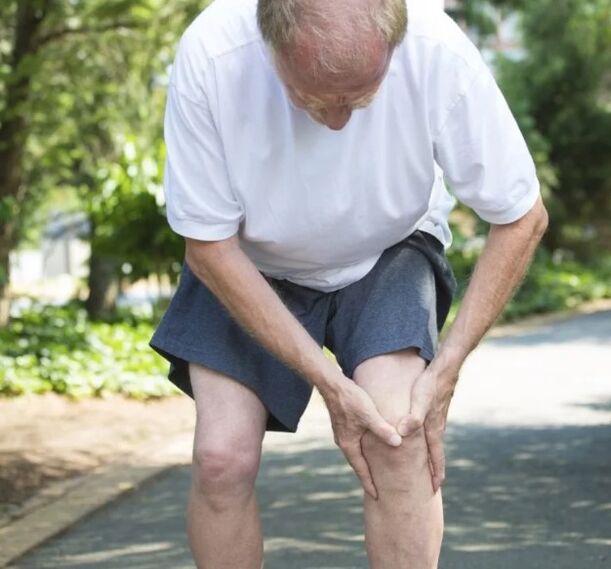
People are prone to knee joint arthrosis to a greater or lesser extent.As a rule, if arthritis occurs, then only at the age of 40-60 years, and if by the age of 60 there is no arthrosis, then it will most likely be no longer, or more accurately, arthritis will be irrelevant (some degenerative knee changes are found in all elderly people, but they are expressed differently)
90%will be signs of arthritis, but not everyone feels their knees as problematic.This is especially true for men that often "serious" arthritis does not indicate themselves or cause minimal annoyance.
Primary arthritis occurs spontaneously, ie.Without releasing factors, so it is called idiopathic, which we talked about earlier.
So we have already discovered that age is one of the main factors that determine the development of arthrosis, as cartilage degeneration processes begin to prevail with age.Any fourth person over 55 years old suffers from knee joint arthritis.But we have also noticed that with age, arthritis does not develop for everyone.So there are other reasons.Before we list them, we notice that there is no main, main reason.Knee joint arthritis develops in terms of causes, while some play a major role while others - less.
Most often, women of the knee joint are suffered by women.The exact reasons for this are unknown, but you can try to explain the following reasons.On average, the life expectancy of women is greater than in men, and, accordingly, the average older woman will express more degenerative processes.In addition, body weight in women is on average slightly higher.The size of the bone in women is smaller than in men, and, coupled with a higher body weight, this leads to higher pressure on the knee joint, and, accordingly, more intense mechanical destruction of the cartilage.In the vast majority of cases in women, arthritis begins to appear after interrupting menstruation, and, perhaps, the lack of estrogens determines the development of arthrosis.Note that efforts to treat knee joint arthrosis in women after menopause by estrogens are, of course, undertaken, but so far they are unsuccessful weight
Of course, the greater the body weight, the larger the load on our knee joints.Moreover, overweight reduces physical activity and leads to hip muscle weakness.For a more active cartilage synthesis, movements (without excessive pressure) are needed, and with a sedentary lifestyle, cartilage cartridge processes begin to prevail.Hip muscles are important stabilizers of the knee joint, and with the weakness of these muscles, the movement in the knee joint becomes more painted, which accelerates the destruction of the cartilage.In general, these processes can be described as a bad circle: the greater the body weight, the faster the knee joint is destroyed, the greater the pain, the harder it is to move, which again leads to excess body weight

The wicked circle of overweight and arthrosis of the knee joint
Only the arthrosis of the knee joint develops only among full people - those who do not have overweight can also suffer from arthritis.Again, this is because arthritis has no reason.
Inheritance It has long been observed that arthrosis of the knee joints is a "family" disease.If you have arthritis or your parents, then, unfortunately, the probability of this disease is high with you.Scientists have discovered many gene traits that are responsible, for example, the individual features of the main cartilage structure of the cartilage - collagen, but, unfortunately, so far these discoveries have no practical importance because we cannot affect the prevention or treatment of arthritis.There is evidence that arthritis inheritance is transmitted along the female line, which partly explains their great tendency for this disease.
The primary arthrosis of the knee joint does not only occur for one reason, but only by their entirety.At the same time, arthritis of the knee joint is at one scale or another in almost all people over 60, but the severity of arthrosis is very different, and not always the arthritis found in radiography manifests itself.In fact, it is even more difficult: not any pain in the knee joint in an elderly person or, moreover, at the age of 40-60 will be associated with changes in the characteristic radiography of arthrosis.
For example, scientists have found that 76% of the elderly with knee complaints in the radiography found arthrosis. This means, not any pain in the knee joint in an elderly person is necessarily arthritis of the knee joint At the same time, among all the elderly with arthrosis of the knee joints found in radiographs, only 81% will complain of pain. That is, it does not always hurt existing arthritis
Strictly, there is no mandatory association of the severity of pain with the severity of the arthrosis of the knee joint in the radiograph.It happens that changes in radiographs are completely irrelevant, and the pain is severe, and occurs on the other hand: the knot is completely destroyed in radiographs, and a person can ride a bike, engage in yoga, work as a malarus, and such cases we meet almost daily.The blue arrow marked the outside of the joint, and the orange - the interior of the joint.Pay attention to the way the gap between the bones is now from the inside: the cartilage is not visible on the radiograph, and it is this gap that means cartilage.In this case, there is virtually no jump in the inner part of the knee joint and the bone is already rubbed into the bone
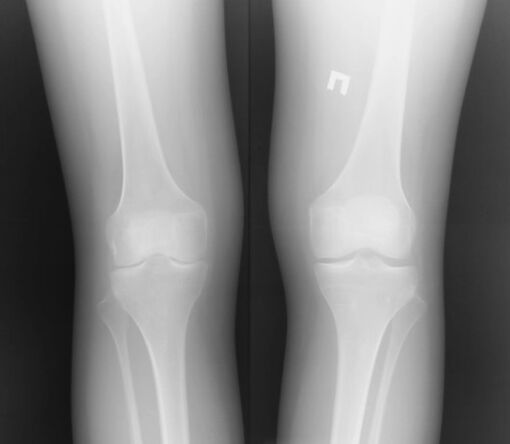
With the gradual snoring of the cartilage from the inner part of the knee joint, the foot begins to bend.Since arthritis often affects both knee joints, that is, it is bilateral, both legs begin to distort, and an O leg deformation occurs (variable deformation)
less frequently (in approximately 10% of cases), the external parts of the joint are affected by arthrosis, and in this case begins X -shaped deformity (valgus).
Me gërryerjen graduale të kërcit nga pjesa e brendshme e nyjës së gjurit, këmba fillon të përkulet. Meqenëse artroza shpesh prek të dy nyjet e gjurit, domethënë, është bilaterale, të dy këmbët fillojnë të shtrembërohen, dhe ndodh një deformim i këmbës në formë O (deformim varior).
Më rrallë (në afërsisht 10% të rasteve), pjesët e jashtme të bashkimit preken nga artroza, dhe në këtë rast fillon deformimi në formë X (Valgus).
Of course, with curvature, the load on the internal deformation variants (with O Out -shaped (X -shaped) increases even more, and the arthritis will develop faster and irreversibly.This option is called patello-phomoral arthrosis and occurs, as a rule, due to
slope, subluxation of a model, Hyperness Syndrome which is dedicated to a special article on our website or after Patella Fractures , for which you can also read in a separate article Secondary knee joint arthritis
knee joint arthrosis can also develop due to specific causes, in this case the arthritis is called secondary.Now we will briefly talk about the options for secondary arthritis
post -traumatic arthrosis of the knee.
Knee joint injuries, of course, do not add a union of health and almost everyone, in one way or another, increase the risk of arthrosis One of the most common knee joint damage is the meniscus ruptures, which is dedicated to a special article on our website.Unfortunately, every person with the meniscus gap has ever had the possibility of developing arthritis ever.If a medial (internal) meniscus is damaged, then arthritis will develop better inside the knee joint.And, according to the circumstances, if the external meniscus explodes, then arthritis will develop in the outer joint of the joint.Note that meniscus rupture does not always necessarily lead to arthritis, the probability of AUL development.Of course, the more the meniscus is damaged, the higher the risk of arthrosis
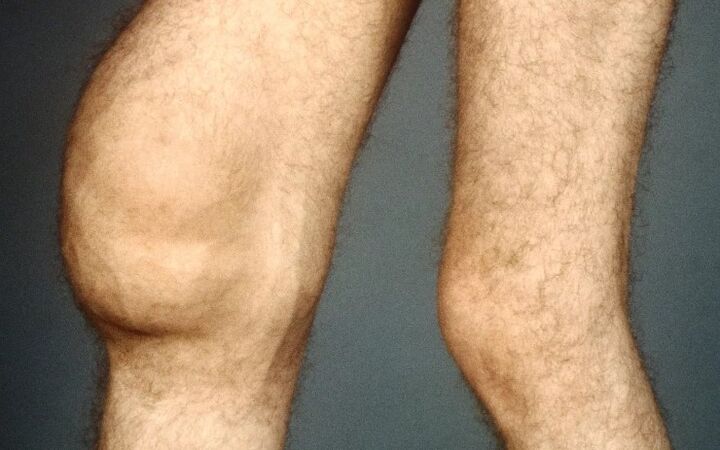
Another reason for the development of knee joint arthrosis are ligament ruptures, for example, a rupture of the front intersection ligament.As a result of the ligament rupture in the joint, instability may occur, which, of course, will lead to cartilage damage and arthrosis development.Of course, cartilage damage depends on the degree of instability, which may be different
A much more severe injury to the knee joint is a fracture of tibial tibia or femoral condyle fracture if the fracture line enters the articular surface, then such fracture is called intraarticular.Almost every intra -articular fracture is associated with a displacement of fragments, and thus, the shape of the articular surface changes.The step that appears as a result of the change inevitably leads to progressive destruction of cartilage and the appearance of arthrosis.Of course, the heavier a fracture, the larger the intraarticular fracture of the fragments, the more the cartilage jumps and the risk of arthrosis is higher.After heavy fractures made of tibial air conditioning, arthritis develops in almost 100% of cases despite the operation of osteosynthesis performed perfectly (eliminating bone fragments and screws, plates, etc.)

















































